
When we go to the field to evaluate a crop, there are typically three fundamental points we need to take into consideration that include: 1) stage of growth, 2) general crop vigor and yield potential, and 3) anticipate the next stage of development and what we need to do in terms of field crop management. These considerations are commonly focused on aboveground crop evaluations. However, the root system is also an extremely important part of the crop condition to evaluate.
Root systems were described in a basic manner in a recent article on 2 May 2023 (UA Vegetable IPM Newsletter Volume 14, No. 9).
The effective root zone depth is the depth of soil used by the bulk of the plant root system to explore a soil volume and obtain plant-available moisture and plant nutrients. Effective root depth is not the same as the maximum root zone depth. As a rule of thumb, we commonly consider about 70% of the moisture and nutrient uptake by plant roots takes place in the top 24 inches of the root zone; about 20% from the third quarter; and about 10% from the soil in the deepest quarter of the root zone (Figure 1).
The small and very fine root hairs are the most physiologically active portion of a developing root system. It is important that the plants continue to develop and generate fresh young roots and an abundance of fine root hairs to maintain water and nutrient uptake.
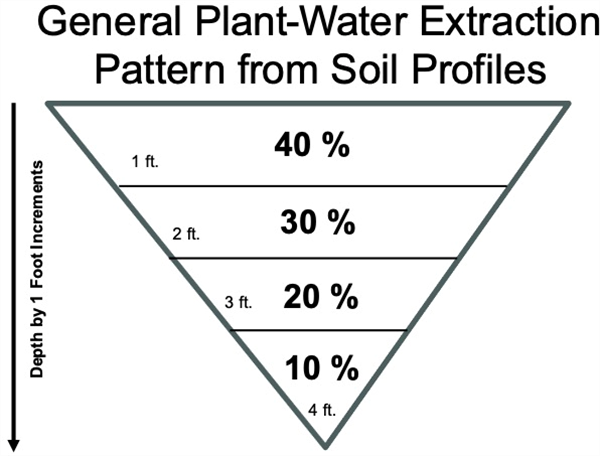
Figure 1. General pattern for plant-water and nutrient uptake from the soil profile.
It is important to point out that these general root development patterns are dependent on the nature of the soil profile in the fields. Soil profiles with compaction layers, as well as rock or caliche layers will limit root development and full exploration of the soil volume that the plants are capable of (Figure 2).
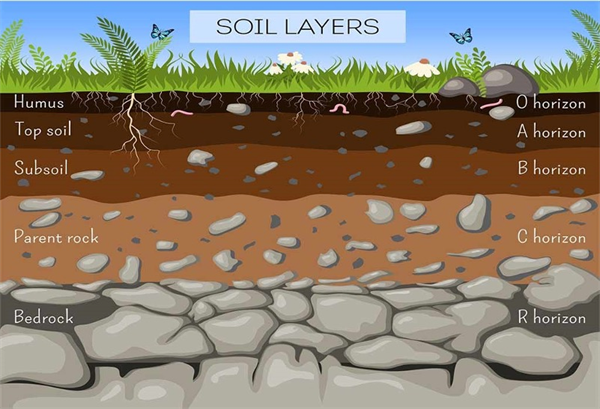
Figure 2. Generalized soil profile with major horizons.
Therefore, in scouting fields and making crop evaluations, examining the root systems is an important part of the process. Leafy green vegetable crops need to develop a marketable plant in a relatively short amount of time and a strong root system is essential.
It does take more time and effort to check root systems and it is a plant destructive process since we need to literally excavate the roots. So, it is also important to be careful of where and how we sample plants and the root systems in a field.
Crop species can vary significantly in their patterns of root development and it is important to know what is “normal” when evaluating crops in the field. An excellent reference for vegetable crop root system development is a 1927 publication by Dr. John E. Weaver and William E. Bruner from the University of Nebraska (Root Development of Vegetable Crops). This publication can be found at the following link:
https://soilandhealth.org/wp-content/uploads/01aglibrary/010137veg.roots/010137toc.html
A few basic examples from the Weaver and Bruner publication are provided in the following figures (Figures 3-10).
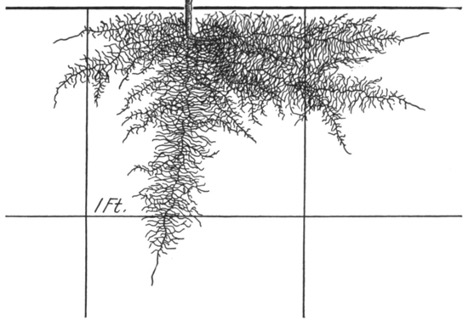
Figure 3. Cauliflower, 3 weeks after transplanting.

Figure 4. Cabbage roots, 55 days after transplanting.
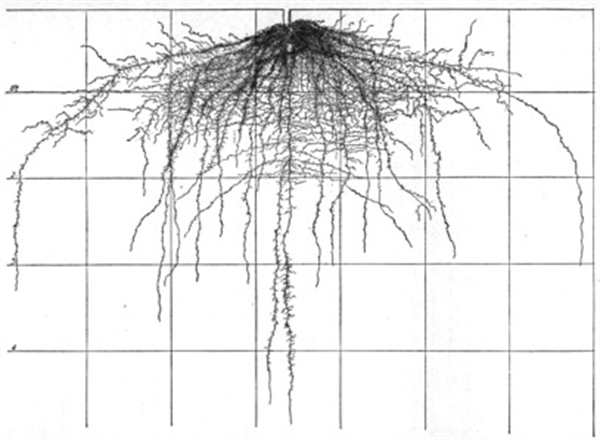
Figure 5. Cabbage roots, 75 days after transplanting.
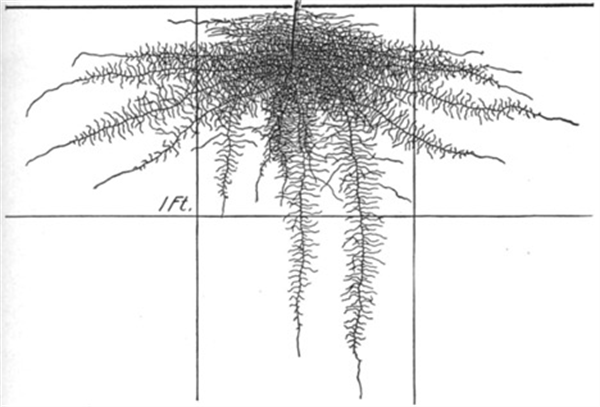
Figure 6. Pepper roots, 24 days.
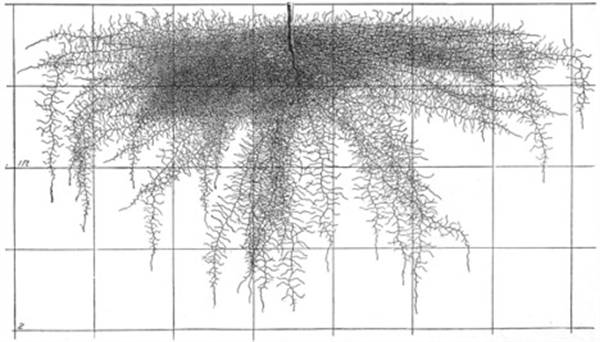
Figure 7. Pepper roots, 45 days (6 weeks).
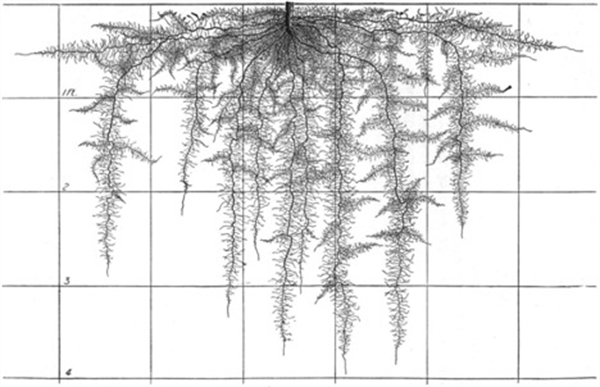
Figure 8. Pepper roots, mature.
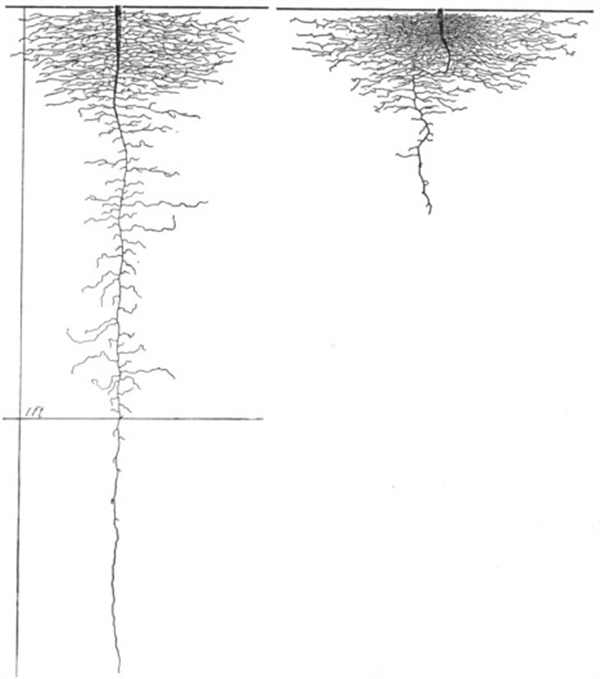
Figure 9. Lettuce roots, 3 weeks. The roots on the right were grown in compact soil, the roots on the
left were grown in loose/open soil.
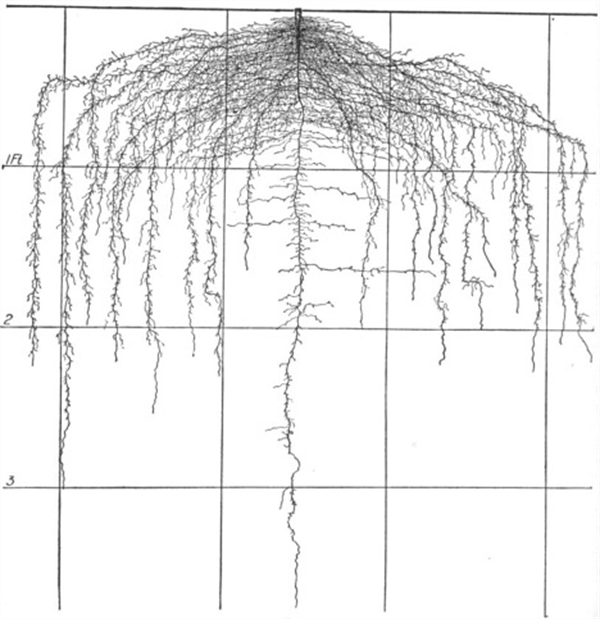
Figure 10. Lettuce roots, 60 days.
Over the last couple of years, we developed a prototype steam applicator for injecting steam into the soil prior to planting. The concept behind soil steaming is similar to soil solarization - heat the soil to levels sufficient to kill soilborne pathogens and weed seeds (typically 140 °F > 20 minutes). The device is principally comprised of a 63 BHP steam generator mounted on an elongated bed shaper (Fig. 1). The apparatus applies steam via shank injection and from rectangular ports on top of the bed shaper. After cooling (< ½ a day), the crop is planted into the disinfested soil.
Trial results have been very promising and reported in previous UA Veg IPM articles. In brief, the multi-year studies have shown that soil steaming provides excellent weed control (>90%), suppresses problematic soilborne diseases (Fusarium wilt of lettuce> 50%, lettuce drop > 70%) and increases crop yields (>24%).
This season, we would like to demonstrate the technique to interested growers. In addition to obtaining grower feedback on the viability of soil steaming, a second objective would be to validate our small plot research results at the field scale level. The machine can be adjusted to work with most bed configurations including 40”, 42”, 80” and 84” beds, and work with any crop, including organic crops (soil steaming is organically compliant). So far, the device has been successfully tested in iceberg lettuce, romaine, baby leaf spinach and carrot crops.
If you are interested in an on-farm demo of soil steaming, please let me know. I’d be happy to work with you.
Fig. 1. a) Band-steam applicator principally comprising a 63 BHP steam generator
mounted on a bed-shaper applicator sled. Steam applicator sled b) top view and
c) bottom view. Click here or on the image above to see the device in action.
With every irrigation we continue having new generations of weeds germinating. Herbicides with a good soil residual are very useful for extending good control for a longer period. The ideal scenario would be that the herbicide is present only when we need it and dissipate when we rotate to a sensitive crop. This can become a challenge when we have products that have a long soil residual. Sometimes herbicides have a low use rates and long residuals. As an example, we have some of the sulfonylureas and imidazolinones that are highly effective but have to be carefully used for some scenarios. Some of the factors affecting the persistence of herbicides are the soil characteristics, herbicidal characteristics, and environmental conditions1.
The University of Nevada, Reno explained that problems can occur when soil where sterilant products has been applied is moved or blows from the application site to other part of a field2. Interestingly recently the IPM Team received a report of a field of radishes with injury in a pattern that was consistent with the passes of the disk. It appears that accidentally a high rate of DCPA and metholachlor was applied previously. Even after land prep and irrigations the crop presented phytotoxicity symptoms. Also, a celery field located South of a treated, dusty non-agricultural area presented injury consistent with the wind blow. The damage was more severe closer to the treated area (North) and gradually disappeared as walking South into the celery field. Similarly, it has been reported that compost can be contaminated with herbicides such as clopyralid when treated plants are added to the compost mix causing symptoms to lettuce.
Reference:
1. Retrieved from: https://ag.arizona.edu/crops/vegetables/advisories/more/weed31.html
2. University of Nevada Reno: https://extension.unr.edu/publication.aspx?PubID=3322